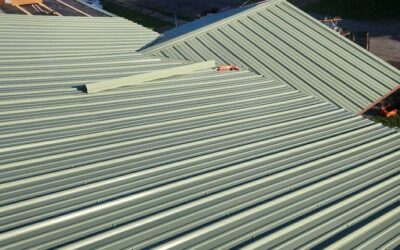Roof Window With Installation: The Ultimate Guide for Homeowners
Are you considering adding a roof window to brighten up your attic or upper floor? Or maybe you want to improve ventilation and give your home a fresh, modern look? Installing a roof window is a fantastic way to bring natural light and fresh air into spaces that typically lack both. But, like any roofing project, the installation process must be done right to avoid leaks, drafts, or damage.
This comprehensive guide will walk you through everything you need to know about roof windows with installation — from the benefits and types of roof windows to a detailed look at the installation process and tips to ensure a successful project. Whether you’re a DIY enthusiast or planning to hire professionals, this article is packed with valuable insights.
If you live in Northeast Ohio or nearby areas like Jefferson and Ashtabula County, this guide also explains why working with trusted local contractors like S&K Construction And Remodeling LLC is essential for a flawless roof window installation.
What Is a Roof Window?
A roof window is a type of window installed in a sloped roof that provides natural light and ventilation to the space below. Unlike skylights, which are often fixed and purely for light, many roof windows open outward, allowing fresh air in. This makes them an excellent choice for attics, loft conversions, and top-floor rooms that need more daylight and airflow.
Why Consider a Roof Window?
1. Increase Natural Light
Roof windows allow sunlight to flood into spaces that might otherwise be dark and gloomy, making your home feel more open and inviting.
2. Improve Ventilation
Openable roof windows can help circulate fresh air, reduce humidity, and improve indoor air quality.
3. Energy Savings
By maximizing daylight and ventilation, roof windows reduce the need for artificial lighting and mechanical cooling, potentially lowering your energy bills.
4. Enhance Aesthetics
A roof window adds architectural interest and can significantly improve your home’s curb appeal and interior ambiance.
5. Boost Home Value
Upgrading your home with roof windows can increase its market value by improving functionality and style.
Types of Roof Windows
Choosing the right type of roof window depends on your roof’s slope, design preferences, and usage needs.
Top-Hinged Roof Windows
These open outward from the bottom, creating an awning effect that lets in air while keeping rain out.
Center-Pivot Roof Windows
These pivot around a central horizontal axis and are ideal for maximizing views while standing close to the window.
Fixed Roof Windows
Non-opening windows that provide natural light but no ventilation.
Electric or Automated Roof Windows
Controlled remotely, these are perfect for hard-to-reach areas and smart homes.
Roof Window Materials
Roof windows come in several materials, each with its advantages:
- Wood: Offers natural beauty and good insulation but requires maintenance.
- PVC: Low maintenance, durable, and weather-resistant.
- Aluminum: Sleek, lightweight, and modern but may not insulate as well as wood or PVC.
Planning Your Roof Window Installation
Before installation, consider these critical factors:
- Roof Pitch and Structure: Ensure your roof’s angle is suitable for the window type.
- Window Size and Location: Optimize placement for light, ventilation, and views.
- Building Codes and Permits: Check local regulations and obtain necessary approvals.
- Insulation and Waterproofing: Plan for proper sealing to prevent leaks and energy loss.
Step-by-Step Roof Window Installation Process
Proper installation is vital to ensure your roof window performs well and lasts long. Here’s a typical installation outline:
Step 1: Roof Preparation
Remove shingles or roofing material at the installation site, and mark the window dimensions on the roof deck.
Step 2: Cut the Opening
Carefully cut the roof decking along the marked lines and clear any nails or debris.
Step 3: Frame the Opening
Install supporting frames around the opening using treated lumber or metal kits designed for roof windows.
Step 4: Install Flashing
Apply flashing starting at the bottom, then sides, then top to create a waterproof barrier directing water away from the window.
Step 5: Place and Secure the Window
Fit the window into the framed opening and secure it with screws or fasteners per manufacturer guidelines.
Step 6: Insulate and Vapor Barrier
Insulate around the frame to prevent heat loss and install vapor barriers to control moisture.
Step 7: Finish Interior and Roofing
Replace roofing materials around the window and finish interior trims and drywall for a clean look.
Common Challenges and How to Avoid Them
- Leaks: Ensure flashing is correctly installed and sealed.
- Poor Insulation: Use proper insulation materials to avoid heat loss.
- Improper Window Placement: Plan for optimal daylight and ventilation without overheating.
- Building Code Violations: Always get permits and follow local regulations.
Maintenance Tips for Roof Windows
- Clean glass regularly to maximize light.
- Inspect flashing and seals annually.
- Lubricate hinges and moving parts.
- Clear debris and leaves from surrounding roof areas.
Roof Window Installation in Northeast Ohio
In regions like Northeast Ohio, including Jefferson and Ashtabula County, roof window installation must consider:
- Harsh winter conditions with snow and ice
- Frequent rain requiring excellent waterproofing
- Energy efficiency to combat cold temperatures
Choosing a local expert like S&K Construction And Remodeling LLC means your installation will be tailored to the climate and built to last.
Why Hire Professionals Like S&K Construction And Remodeling LLC?
- Skilled installation teams with roofing and window expertise.
- Knowledge of local building codes and weather challenges.
- Use of top-quality materials and manufacturer-approved techniques.
- Transparent pricing and financing options.
- Positive reviews from satisfied customers in Northeast Ohio.
Frequently Asked Questions (FAQs)
How long does roof window installation take?
Typically 1-2 days, depending on roof complexity.
Can I install a roof window myself?
DIY is possible but not recommended unless you have roofing experience. Professional installation prevents costly mistakes.
Do I need a permit for roof window installation?
Most areas require permits, and professionals usually handle this process.
How do roof windows affect energy bills?
Properly installed and insulated roof windows can improve energy efficiency.
Conclusion
A roof window with installation is a valuable upgrade that brings natural light, ventilation, and style to your home. Whether you want to convert an attic or simply brighten an upper room, choosing the right window and installing it correctly is crucial.
For homeowners in Northeast Ohio, Jefferson, and Ashtabula County, partnering with experts like S&K Construction And Remodeling LLC guarantees quality workmanship designed for local climate challenges.
Ready to brighten your home? Contact S&K Construction today for a consultation and estimate on your roof window installation project.
If you want, I can also craft a meta description, keywords, or localized calls to action to boost SEO further. Would you like me to do that?
 (440) 307-2060
(440) 307-2060

